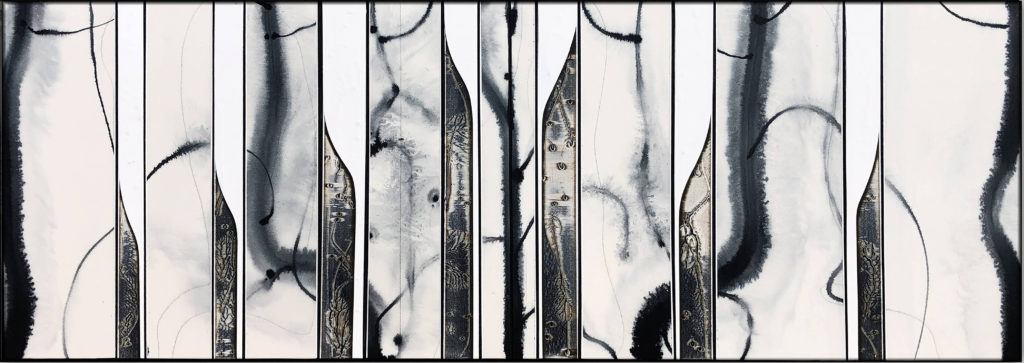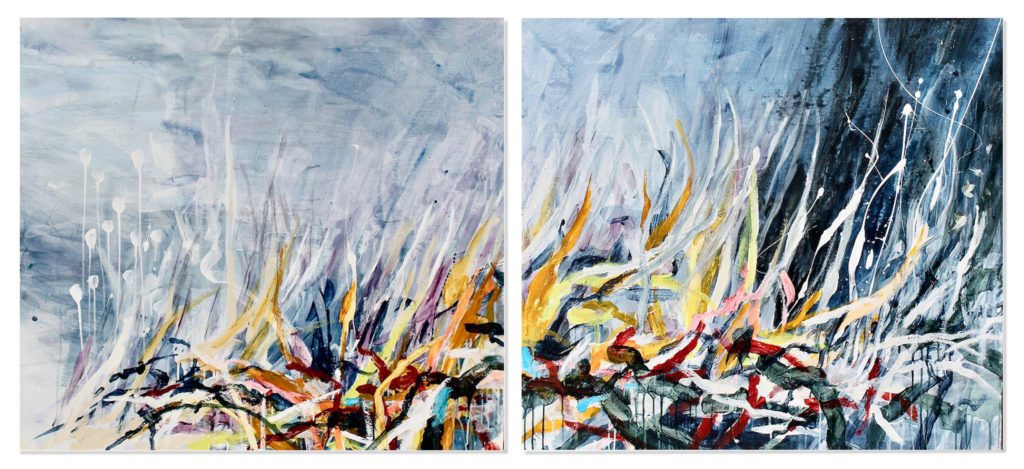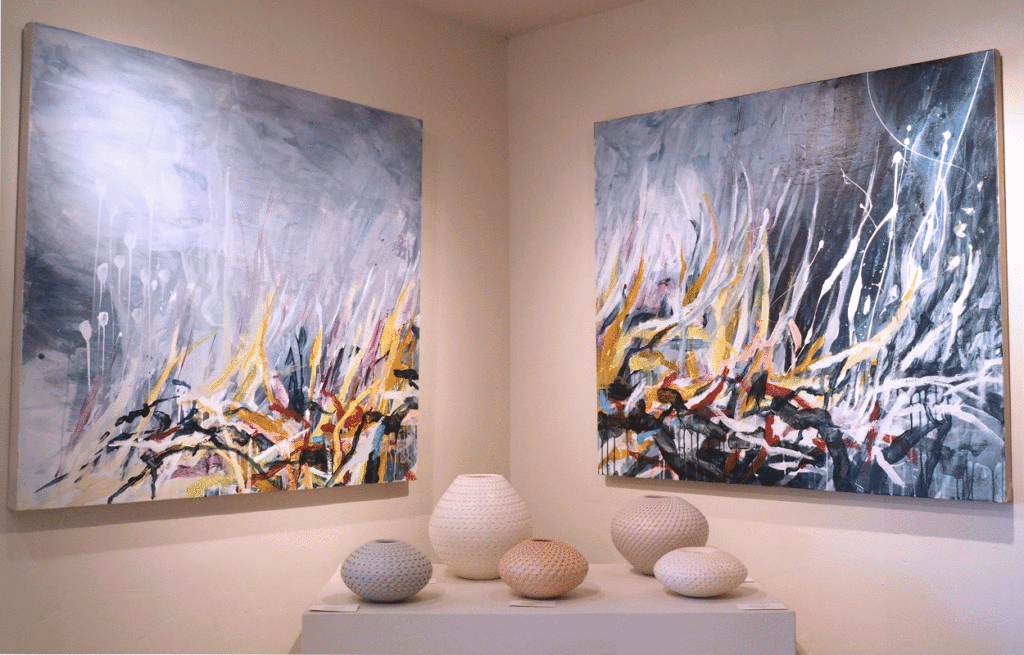Allison Stewart and Michael Kessler both explore nature through their own form of abstract style. Both artists capture in mixed media works the loss and change of the landscapes around them. However, Stewart records her responses to the wildlife habitats of Louisiana and Colorado threatened by mankind, while Kessler examines the natural processes of erosion in landscapes across the United States. Both artists enjoy creating large-scale diptychs and polyptychs, so we’ve asked both of them what it is about this form that complements their work and benefits their clients.

First, what is a polyptych?
A polyptych (pronounced ” /ˈpolytik/) is a painting made of two panels (a polyptych is a painting divided into any number of panels, usually four or more). Traditionally, diptychs were used as alter pieces, or ancient writing tablets, connected by a hinge so the panels could be closed and protected, and tended to be smaller in scale. In the modern-day world of art, a diptych is considered to be a wonderfully diverse, easy to manage set of panels to be displayed as one large piece, separated as individual works, or arranged as complementary works.
Michael Kessler on diptychs and polyptychs
“I’ve always been interested in producing groups of related works whether they are diptychs or polyptychs.
Setting up a visual situation where one set of elements are juxtaposed with a related set of elements becomes a way of noticing similarities and differences. These sets of elements can then be orchestrated in such a way as to create movement and relationships that invite the viewer to engage in a visual reading. Experiencing a group of related works then becomes more akin to a musical experience than it is to looking at a photograph.
There are also many practical reasons to work in a modular way. It’s a lot easier to handle a smaller rectangle than a larger rectangle and it provides the opportunity to mix and match or turn certain pieces upside down and play with relationships as a kind of puzzle. Often, I will pair up pieces and achieve a set of relationships that I wouldn’t otherwise be able to employ.
Storage and transportation are also considerations. It’s very convenient and much safer to take like-sized rectangles and store them face-to-face. Shipping is far less expensive when the package is smaller and can be handled by commercial carriers such as FedEx. Less damage occurs when paintings are handled in this way.”



Allison Stewart on diptychs
“For several years I have been engaged in creating diptychs and triptychs, as they present a greater challenge than a single canvas in terms of composition and design. For me, each panel in a diptych must be a complete composition that can stand alone. When combined with a second panel in a diptych format, the result is a different, more complex painting. The left side and the right side do not match, but complement each other in their composition and balance.
I begin a diptych by working both panels together to see the design elements develop. Then I separate them and work on each side independently to emphasize the unique qualities of each. Toward the end, I reunite the two sides to unify the painting to create a single, large piece with a distinct feeling of unified wholeness.”




Every visit to Ann Korologos Gallery is meant to leave clients more informed, inspired, and in awe of beauty. For more information about these artists or available works, please contact us at (970) 927-9668, visit the gallery in person at 211 Midland Avenue in Basalt, Colorado, or contact us by email at art@korologosgallery.com.